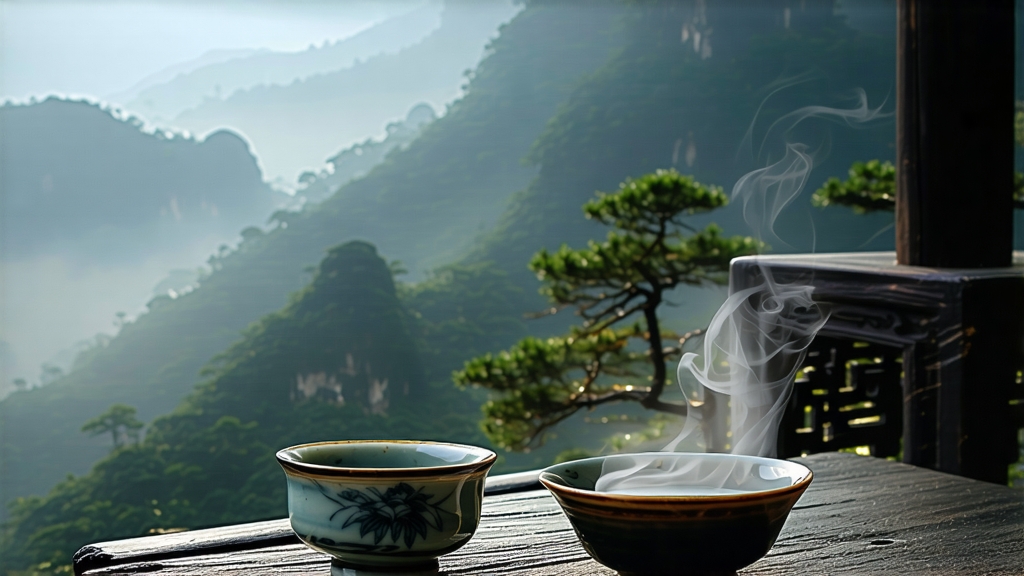
When Westerners first spoke of “black tea” in the seventeenth century, they were not describing a colour chart—they were tasting Lapsang Souchong. Grown in the granite gorges of Tongmu Pass, high inside China’s Wuyi Mountains of northern Fujian, this is the oldest documented black tea on earth. Its Chinese name, Zhengshan Xiaozhong, literally means “small-leaf from the original mountain,” a geographic boast that today is protected by both national law and UNESCO World Heritage status. Yet beyond terroir, Lapsang Souchong’s global fame rests on one unforgettable characteristic: the sweet, resinous perfume of pine smoke that clings to every glossy strand of leaf. From London coffeehouses to Russian samovars, that campfire aroma became the signature of “real” tea for three centuries, and it still divides purists who adore its primal edge from skeptics who mistake it for liquid bacon. Understanding this smoke—why it was born, how it is controlled, and when it is absent—is the key that unlocks the entire lineage of Chinese black tea.
History: From Bandit Country to Breakfast Tables
The Wuyi range has produced tea since the Song dynasty, but for most of that history the leaves were compressed into cakes or roasted into oolong. Black tea’s accidental birth is dated to 1568, when, legend claims, a Qingming season raid by local bandits interrupted the usual kill-green schedule. By the time the farmers returned, the piled leaves had fully oxidised. Rather than waste the crop, they dried the rust-coloured leaves over the nearest available fuel—masson pine and local cedar—to hasten the finish. The result travelled down the Nine-Dragon Gorge to the port of Xiamen, where Dutch traders paid a premium for its keeping qualities and smoky perfume. By 1604 the East India Company listed “Bohea” (the Minnan pronunciation of Wuyi) as a separate commodity; by 1662 Catherine of Braganza made it the ceremonial drink of the English court. The original Tongmu gardens, no larger than 60 hectares today, had already become the genetic and stylistic template for every later black tea—Keemun, Dianhong, Assam and Ceylon all borrowed the wither-oxidise-roll-dry protocol first codified here.
Terroir: Why Only Tongmu Tastes Like Tongmu
The Wuyi Mountains rise from subtropical evergreen foothills to 2,160 m granite domes whose cliffs reflect morning heat onto terraced tea gardens wedged between bamboo and orchid groves. Frequent cloud cover filters UV light, slowing photosynthesis and thickening leaf cuticles; cool nights lock in amino acids that translate into malt sweetness. Soil is a thin, acidic latosol rich in quartz and feldspar—minerals that sharpen the finish and allow the bush to thrive without irrigation. Crucially, Tongmu lies inside a national nature reserve; pesticides are banned, and only residents of the four original villages may harvest. These factors create a leaf chemistry impossible to replicate even in neighbouring counties: higher linalool (floral), lower geraniol (soapy), and a unique ratio of maltol to guaiacol that delivers the signature “longan and pine” aroma.
Cultivars: Beyond the Smoke
Although the term Lapsang Souchong is used abroad as a synonym for any smoked black tea, within China it is subdivided by cultivar, plucking standard and finishing style. The two traditional bushes are Caicha (small-leaf native) and Wuyi Qizhong (a slightly larger clone selected in the 1950s). Caicha yields the most refined cup, but only 300 kg are made each spring. Leaves are graded by harvest window:
- Ming-Qian (pre-Qingming) buds only—called “Jin Jun Mei” since 2005—are golden, downy and smoke-free, commanding over $3,000 per kg.
- Yu-Qian (pre-rain) one bud, two leaves—classic “unsmoked” Xiaozhong, biscuity and honeyed.
- Gu-Yu (late April) larger leaf—reserved for the traditional pine-smoke version exported as Lapsang Souchong.
Thus, the same geography produces both the most delicate and the most assertive black teas on the market, differentiated solely by pluck and final drying fuel.
Craft: The Four Stages of Smoke
Modern production still follows the 18-step sequence written down